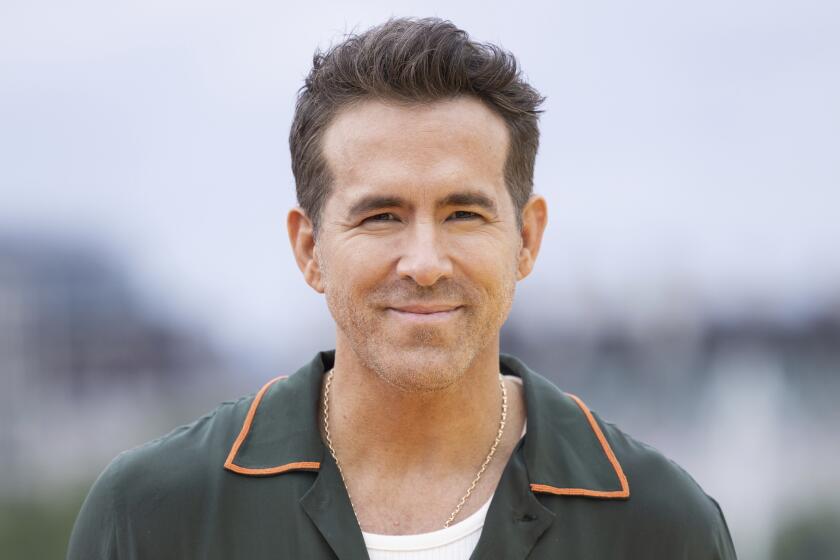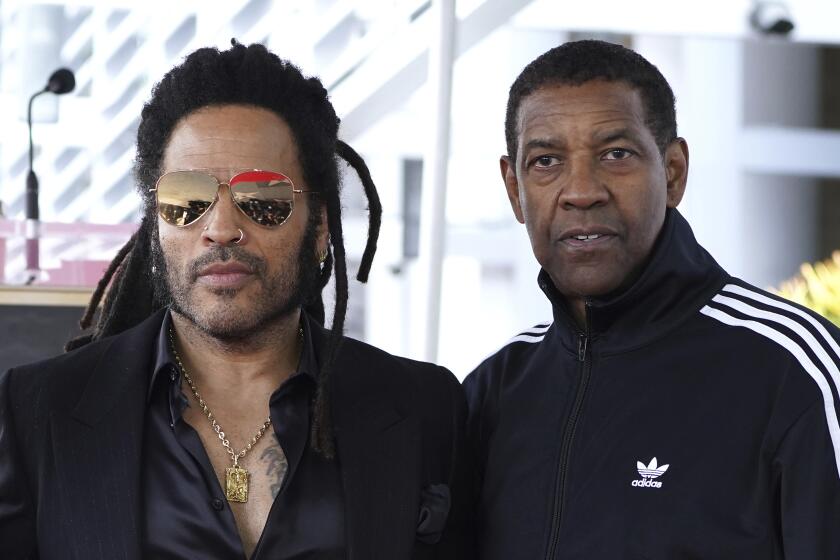Eye of Hurricane Spike
All sorts of political figures, celebrities and brainy engineers have made their way to New Orleans over the past 11 months to offer solace and assistance in the wake of the devastation left by Hurricane Katrina last August. But there’s nothing quite like having Spike Lee in your corner.
Even when Lee was promoting his Hollywood thriller “The Inside Man” earlier this year, he used his media clout to broadcast an all-points alert for people he wanted to get on camera for his documentary, “When the Levees Broke: A Requiem in Four Acts, which debuts tonight from 9 to 11 on HBO. (The second two-hour installment airs Tuesday at 9 p.m.)
Doing an interview with a writer from the New York Observer, Lee recalled the story of a shopper who’d confronted Secretary of State Condoleezza Rice at the posh Ferragamo shoe store on Fifth Avenue in New York. Knowing the woman would be a great ‘get’ for the film, Lee grabbed the reporter’s tape recorder and announced, “To the lady that got in Ms. Rice’s face in the store before you got pulled off by Secret Service. If you read this article, please contact the New York Observer.”
Lee added with a cackle of laughter: “If you are still alive!”
Part artist, part activist, one-man media megaphone, Lee has a way of noisily inserting himself into all sorts of issues, be it lambasting the National Rifle Assn. for gun violence or ridiculing movie studios for the lack of African American executives. (At his vacation home on Martha’s Vineyard, he flies a huge New York Yankees flag just to aggravate the local Red Sox fans.) So it comes as no surprise that he’s made a four-hour documentary as a way to focus America’s fleeting attention on the travails of New Orleans, which remains littered with debris, its citizenry un-reassured by the city’s hastily rebuilt levees.
“Those levees are still not safe,” Lee told me when he was in Los Angeles recently. “People are dead because of the incompetence of the Army Corps of Engineers. Forty years after they started work and it still ain’t right! I’m proud that we show in the film the way the teensy-weensy country of Holland has great levees. Why? Because they had the will to get it done right.”
He explodes with a fresh cackle of laughter, his way of signaling that he’s as much confounded as incensed over some new outrage. “I mean, Holland, what’ve they got? Wooden shoes, tulips and a great soccer team. So how come they can do it and we can’t? People are still waiting for a plan from [Mayor C. Ray] Nagin and -- a year later -- there’s still no plan for the good people of New Orleans. It’s a disgrace.”
Lee’s documentary often bristles with this sort of indignation, especially when it’s detailing the inept disaster response from both feckless local officials and an alarmingly unconcerned Bush administration. But by relying largely on regular N’awlins folk to tell its story, the film has a warmth and affection that leavens the many heartbreaking images of dead, bloated bodies and immense destruction.
One local resident takes Lee for a tour of his ramshackle trailer, supplied by the Federal Emergency Management Agency. When he jostles its fold-down dining table, the table collapses. He then shows off the view out his one window, saying with mock surprise, “Ah, another FEMA trailer.” Even though Lee is often critical of Nagin, the film largely portrays him as an irrepressible New Orleans politico, especially when he recounts taking his first post-Katrina shower on Bush’s plush Air Force One, which he describes as the ultimate “pimp mobile.”
“He’s slick,” Lee said. “He was very well prepared for me, so he had an answer for everything. You could say he tap-danced a lot.”
Though the film doesn’t offer much in the way of new revelations, it offers Lee’s signature fascination with people full of contradictions, heroic one moment, all too fallible the next. A shrewd talent scout -- Samuel L. Jackson, John Turturro, Michael Imperioli and Halle Berry all had their first big parts in his films -- Lee has a keen eye for lively, distinctive characters. In fact, if the film has a star, it is Phyllis Montana LeBlanc, a feisty, profane woman from the Lower 9th Ward who has more charisma than a planeload of Hollywood starlets.
“You always want to find people that embody the spirit and essence of your subject, and that was Phyllis,” Lee said. “She was the first person we interviewed, and every time we’d talk to her, it kept getting better. She was raw but eloquent.”
There were some key figures Lee couldn’t get to talk, notably Homeland Security chief Michael Chertoff and Rice, who both said no. Ousted FEMA chief Michael D. Brown agreed to talk, but Lee said, “I decided to not go after him -- I thought Chertoff was the real culprit.” Lee says he couldn’t persuade Louisiana Gov. Kathleen Babineaux Blanco to talk until Nagin agreed first. They are both on camera, though the film makes it clear they have little love for each other.
Lee seems especially gleeful in putting Rice’s feet to the fire, even though he never found the lady who supposedly berated her. “Either she’s camera shy or she’s in Guantanamo Bay,” he quipped. (Lee did find the emergency room physician who heckled Dick Cheney when the vice president showed up for a photo op in Mississippi. Lee even shows his home-video footage of the episode.)
I asked Lee why he took such relish in going after Rice. As secretary of State, she had no direct role in disaster relief, so his beef with her feels personal. “It is personal,” he responded. “People died. When you’re going to buy shoes while people are standing on the rooftops, waving brooms, you’re part of the problem. She has a particular relationship with most African Americans, which is -- she’s really suspect.”
Is he saying that her blackness is a problem? “Hell, yeah,” Lee said. “Being black has a lot to do with it!”
Lee is best known for his feature films, which offer a very personal portrait of modern American history, from black power (“Malcolm X”) and the jazz life (“Mo’ Better Blues”) to the crack epidemic (“Clockers”) and post-2001 New York (“25th Hour”). But he is no slouch as a documentarian, having been nominated for an Oscar for “4 Little Girls,” his 1997 film about an infamous 1963 Birmingham church bombing.
If “When the Levees Broke” arouses controversy, it will be for a sequence of interviews with African American residents who believe it was the government, not the hurricane, that destroyed the levees last August. Lee makes no apologies for airing what others might view as a conspiracy theory, noting that levees were dynamited to save the city’s business center during the great flood of 1927.
“As an African American, I wouldn’t put anything past the U.S. government,” he said. “After things like the Tuskegee experiment, you can’t just dismiss what these people believe as hocus pocus.”
What the film does best -- thanks to the work of Lee’s supervising editor, Sam Pollard -- is reveal the personal costs of the catastrophe. One of the most effective witnesses in the film is Calvin Mackie, a Tulane mechanical engineering professor who is seen patiently offering a professional perspective about the levee failures. Only near the film’s end do we learn that he is also a son who lost both his parents to cancer that went untreated in the chaos that followed the hurricane.
“That’s what Spike does best -- find these fascinating people and show how they stand for something,” said Sheila Nevins, the HBO documentary chief who put up $2 million to make the movie. “Spike is especially passionate about giving a voice to the people who had no voice. When you call FEMA, nobody answers. But when you call Spike Lee, you’ve got somebody who’s going to listen.”
It’s hard to say no to Lee. Nevins had originally given him $1 million for a two-hour film, but he talked her into doubling the bet. “With Spike, I had a premonition that he’d call and want more money,” she recalled. “It was like when you have an unusual pang of pain and you think, ‘Maybe that’s going to be my appendix.’ ”
For Lee, there is plenty of pain to go around. He says one of the revelations he had making the documentary was that the Katrina catastrophe was as much about class as race. “If you’re poor in America, you’re [screwed]. Those poor white folks in New Orleans got a serious wake-up call, because they got treated the same as black people by this government.”
Lee shook his head. “I just hope people come away from this film realizing this disaster didn’t just happen to dumb-ass people who wanted to live below sea level. This was about the choices of our government. The National Guard was in Iraq, not in New Orleans.” He pointed out the window at the lush Los Angeles greenery outside his hotel. “It doesn’t have to be a hurricane. It could be the San Andreas Fault.”
He couldn’t resist one last cackle. “Judging from the way FEMA handled things, you could be next!”
*
Questions or criticism can be e-mailed to patrick .goldstein@latimes.com.
More to Read
Only good movies
Get the Indie Focus newsletter, Mark Olsen's weekly guide to the world of cinema.
You may occasionally receive promotional content from the Los Angeles Times.






